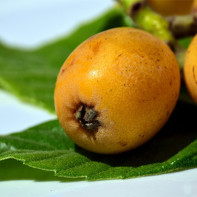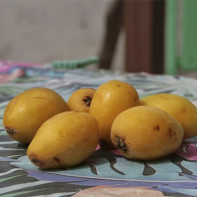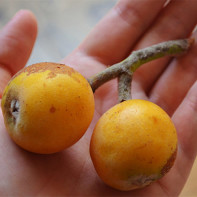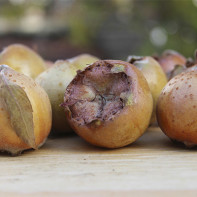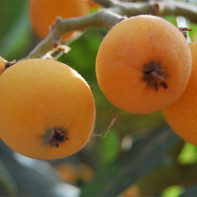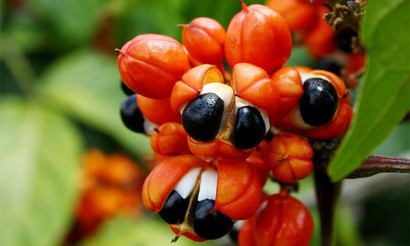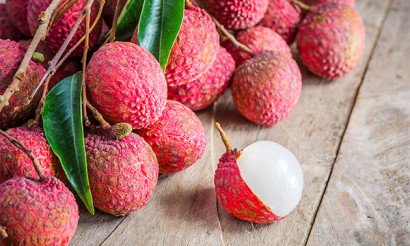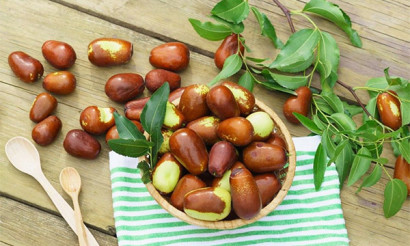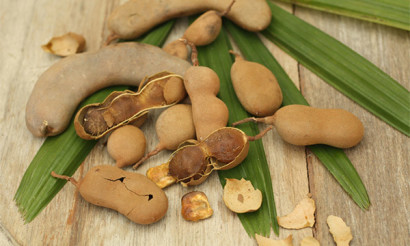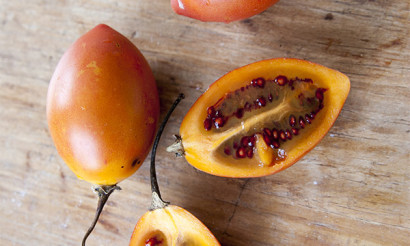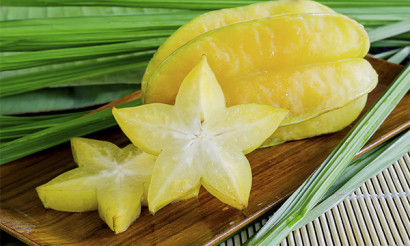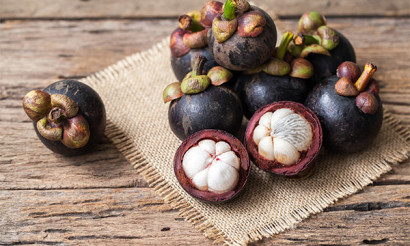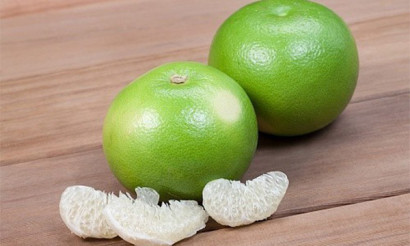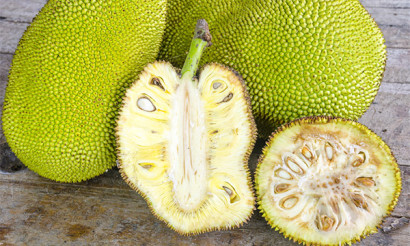Medlar fruit: benefits and harm to the body
When people hear the word "medlar", then, as a rule, images of fairy tale heroes and various oriental sweets appear in the head. In fact, medlar is a plant that, until recently, was used as a decorative culture, but today it has taken its place among the edible fruits.
- What is medlar and where it grows
- Views
- What the taste of medlar looks like
- Composition and calorie content
- Useful properties of medlar
- General benefit
- For women
- For men
- During pregnancy
- When breastfeeding
- For children
- When losing weight
- The benefits of medlar seeds
- Medicinal properties of medlar leaves
- Application in cosmetology
- Medlar in cooking
- Medlar fruit in medicine
- Harm and contraindications
- How to choose and store loquat
- How to eat medlar fruit
- Can I eat bones
- What can be prepared from medlar: recipes
- Jam
- Compote
- Is it possible to give animals medlar fruit
- Interesting facts about the fruit of medlar
What is medlar and where it grows
Medlar is a plant from the Rosaceae family, an apple subfamily. Other names for this culture are Ezgil and Chishkov. The name “medlar” is borrowed from the Turkish language into which it came from Greek.
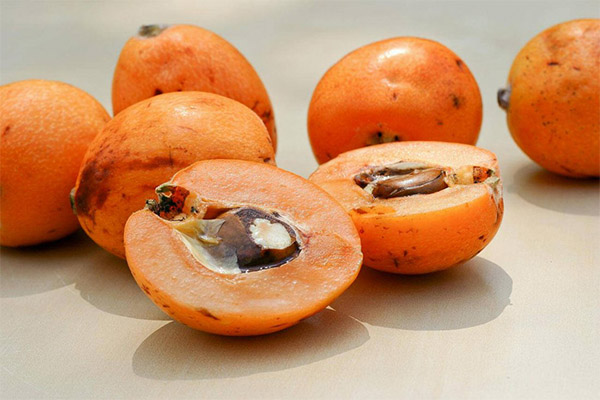
The evergreen tree has a dark gray bark, dark green elliptical leaves. Under optimal growing conditions, trees can grow up to 8 m in height, but usually their height is no more than 6 m. In autumn, the leaves turn red. The end of spring and the beginning of summer is the season of active flowering of medlar. White five-petalled flowers emit a smell attracting various insects, including those that pollinate the plant itself.
In width, brown-red fruits reach 20–30 mm; they have a spherical or pear-shaped shape. Ripe fruits are fairly hard to touch and have a sour taste. Use them only after prolonged storage. Over time, they decrease in size, acquire a sweet taste and soft structure.
Gardeners prefer to cultivate the German medlar. Despite this name, the culture did not originate in Germany, but in the territory of Southeast Europe and Southwest Asia. It was brought to Germany by the Romans. South Ossetia, Armenia, Crimea, Azerbaijan, Georgia, the North Caucasus and Ukraine - deciduous plants are found in these places today.
It is known that the cultivation of medlar people engaged in about 3 thousand years ago. The ancient Greeks became interested in it first, later, during the Middle Ages, it was included in the list of especially important fruit plants. However, after some time, when seafarers began to import exotic fruits to Europe from other continents, medlar lost a significant share of its former popularity. Today, rare in the gardens can be seen chisel trees.
Views
There are more than 30 different varieties of medlar, but only 2 types are popular:
- Germanic (Caucasian). Places of growth - Crimea, the Caucasus, the southern part of Europe. The flowering period begins in the second half of May, the crop is harvested in the fall, as a rule, during the first frosts. The flowers have red stamens, 5-centimeter fruits have a reddish-brown color. The taste of the fruit is similar to applesauce.
- Japanese. Places of growth - China and Japan. The flowering period begins in October, the crop can be harvested in May. Fragrant flowers have a creamy white color. The fruits are yellow-orange in color and pear-shaped. In diameter, the fruits do not exceed 10 cm.
What the taste of medlar looks like
The fruits of medlar have a peculiar taste. They are sour, with tastes similar to guava and passion fruit. The degree of sweetness also fluctuates depending on maturity - ripe fruits are less acidic and more sweet.
Composition and calorie content
100 g of product contain:
- Calories - 47 kcal.
- Proteins - 0.4 g.
- Fats - 0.2 g.
- Carbohydrates - 10.4 g.
Medlar has many healing properties necessary for the human body.Fruits contain vitamins such as A, C, PP. In addition, the product is rich in iron, zinc, copper, selenium, phosphorus, potassium, sodium, magnesium and calcium, as well as folic acid, monounsaturated fats - omega-3 and omega-6 fatty acids. Fruits have low cholesterol and calories, practically do not contain lipids or proteins.
Useful properties of medlar

General benefit
- Strengthens the immune system. Vitamin C, contained in the medlar, supports and stimulates the immune system. It acts as an antioxidant that reduces the risk of chronic diseases. Fruit can also be used to maintain a healthy respiratory system. It can be used to combat the symptoms of colds - nasal congestion and cough. Studies have shown that the product helps to alleviate allergic reactions and can relieve allergy symptoms.
- Supports digestion. Indigestion is a condition that depletes the body and provokes the manifestation of unpleasant symptoms - vomiting and nausea. In this case, experts recommend including fiber-rich foods in the diet. Dietary fiber will help get rid of stomach problems and weaken the influence of factors that provoke disorders. Medlar is a suitable option in this case. The fruits are rich in dietary fiber, and therefore are able to effectively treat diarrhea. In addition, they help regulate the movement of food through the intestines, relieve bloating, and relieve spasms. Eating medlar fruit before meals will help increase appetite and improve digestion.
- Normalizes blood pressure. With high blood pressure, the risks of cardiovascular disease increase. Therefore, measures must be taken to help avoid these dangerous conditions. To do this, you can use the medlar. It contains a lot of potassium, a substance that normalizes the level of blood pressure. The mineral has a beneficial effect on blood vessels and arteries, reducing pressure on their walls. In addition, potassium prevents heart dysfunctions, allowing you to freely pump blood, and also helps to control heart rate.
- Protects against cancer. Free radicals have a negative effect on the body, as they contribute to the growth and reproduction of cancer cells. For this reason, it is necessary to ensure that foods rich in antioxidants are present in sufficient quantities in the daily diet. One of them is medlar. The antioxidants contained in fruits neutralize the effects of free radicals, which in turn reduces the risks of chronic diseases, including oncology. It is also worth noting that the fruits contain substances that directly protect the body from cancer. For example, pectin retains moisture in the colon, thereby exerting a laxative effect. This helps protect the mucous membrane of the colon, reducing the exposure time of toxic substances, and also binds the chemicals that cause cancer.
- Supports respiratory health. Medlar-based teas are often used to maintain health and treat the airways. Drinks containing this fruit can be used as an expectorant or for the treatment of respiratory diseases. They effectively help remove sputum and mucus.
- Normalizes cholesterol. The fruits of medlar are a natural regulator of cholesterol in the blood. Thanks to potassium, zinc and manganese, medlar has a beneficial effect on the body, normalizing the balance of cholesterol.
- Strengthens bone tissue. As a rule, in people with age, indicators of bone density and strength gradually decrease. Due to the high content of minerals, medlar fruits can restore lost bone density and support its health.
- Promotes blood circulation. With circulatory disorders, all organs in the body begin to suffer.This condition can trigger the emergence of completely unforeseen diseases. In this case, you need to reconsider your diet, especially pay attention to the amount of iron that is ingested. When a fruit such as medlar is added to its standard menu, the body will be enriched with essential minerals, including iron, thereby improving blood circulation. The fruit contributes to the development of red blood cells and the normalization of blood circulation.
- Useful for diabetics. People who suffer from diabetes, experts recommend using freshly brewed tea based on medlar. Regular tea consumption regulates blood sugar and glucose levels, preventing sudden bursts that are very dangerous in this condition. Acids present in fruits contribute to the production of polysaccharides, an essential component for the production of insulin. Tea will help reflect the factors that contribute to type 2 diabetes. It is worth saying that before introducing loquat tea into the daily diet, you should consult your doctor.
- Supports eye health. Vitamin A-enriched medlar is an excellent natural product that supports eye health. Vitamin A protects against various eye diseases, including glaucoma and cataracts.
- Fights inflammation. Medlar has analgesic and anti-inflammatory properties that will help to weaken or relieve various inflammations.
- Keeps fit. Fresh medlar fruits are a source of many different minerals and vitamins. With regular consumption of chrysalis, the body is enriched with essential nutrients. Medlar helps to improve functional properties, accelerates metabolism, stimulates the production of energy, thereby helping to keep the body in shape.
- Supports skin health. Thanks to the vitamin C present in loquat, the fruit can be used as a means of supporting healthy skin. Antioxidant properties will help in the fight against factors that damage its cells. Regular consumption of chisinau fruits helps to improve the skin, gives the skin shine and smoothness.
- Supports liver health. The liver is an important organ whose work is to process and remove toxins from the body. To help the liver cope with its duties, it will be enough to include the fruits of medlar in your diet. Linoleic acid and plant sterols contained in the fruits will help her to perform the necessary functions.
For women
Medlar has a beneficial effect on the female body, as it enriches it with necessary substances, the lack of which is often experienced by women. Fruits help eliminate the effects of stressful conditions and support the immune system. The fruit saturates the body with nutrients and at the same time cleanses it, preventing the deposition of subcutaneous fat.
Medlar can be used in cosmetic procedures, for example, the pulp of the fruit is perfect for preparing nutritious and anti-aging masks, and the bones can be included in natural scrubs.
For men
Medlar is useful for men who are actively involved in sports. The fruit will help get rid of the unpleasant consequences of intense physical exertion, as well as saturate the body with the energy that will be needed for further activities. Fruits are especially useful during the recovery period, because they contain sugars, which contribute to the replenishment of glycogen stores. In addition, medlar is rich in potassium.A deficiency of this mineral can provoke muscle cramps and lead to rapid fatigue during sports.
Since kidney disease is a more common cause of death in men, a strong half of humanity should take care of the health of this body in advance. Medlar again comes to the rescue. The fruit consists of 85% water, so it perfectly moisturizes the body and facilitates the production of urine, which will help get rid of toxins and support the work of the kidneys. Medlar is recommended for use with gout and kidney stones.
During pregnancy
Medlar is, according to some experts, simply an indispensable product during pregnancy. Fruits can be consumed both raw and as part of canned fruit drinks and jams. Medlar has an expectorant effect, drinks based on it can help pregnant women get rid of vomiting, nausea and other symptoms of toxicosis.
Fruits along with leaves can be used to prepare products that resist the flu virus, which is especially dangerous at this stage. The fruit also stimulates digestion, improves appetite, and in some cases quenches thirst. Some pregnant women suffer from poor appetite and impaired digestive functions, so it is very important to have such a healthy product as loquat in the diet.
Despite a number of useful properties of fruits, it is necessary to observe moderation of consumption. With excessive use of medlar can have the opposite effect on the body, triggering an allergy.
When breastfeeding
Medlar can be eaten while breastfeeding. Traditional Chinese medicine believes that this fruit will help relieve post-natal symptoms - vomiting and nausea. The fruits are rich in vitamins, amygdalin, resveratrol and other anti-cancer substances that are useful for nursing mothers.
It is worth noting that when breastfeeding it is not recommended to use medlar leaves, as well as traditional Chinese medicines that contain elements of this plant. Use is allowed in a minimum amount. Medlar can provoke the occurrence of allergic reactions in a child, therefore, it must be introduced into the diet gradually, in small portions, while carefully observing the baby's reaction. In case of redness or rashes, you should immediately consult a doctor.
For children
Infants under 1 year old are not recommended to eat medlar. After 1 year, you can slowly begin to introduce fruits into the children's diet, while it is necessary to observe the manifestation of any allergic reactions. Keep in mind that the seeds of the fruit contain toxic alkaloids, which can trigger the development of serious, life-threatening symptoms. Therefore, it is necessary to carefully ensure that, along with the pulp, seeds do not fall into the children's diet.
When losing weight
The fruits of medlar are rich in fiber, so they are very useful in the process of losing weight. Fiber supports the work of the stomach and perfectly saturates the body, which in turn suppresses the feeling of hunger. Fruits are very low in calories, so they are suitable for a diet menu.
In addition, the substances contained in fruits help not to accumulate fats in the body and fight constipation. Medlar also has a diuretic effect. This contributes to the fact that the body will not retain excess fluid. It is worth noting that the fruits have a pleasant taste that will dilute the diet.
The benefits of medlar seeds
The bones of medlar contain toxic substances that can trigger digestive disorders, and if their concentration is quite large, the consequences can be very serious.Amygdalin is a substance that gives a bitterness to a product. As a result of reactions in the digestive tract, it forms hydrocyanic acid, which is a severe poison. Styrene, another toxic substance, is also present in the seeds.
For the above reasons, medlar bones are not just inedible, but dangerous to health, therefore it is forbidden to use them both for humans and animals. If we talk about roasted and powdered seeds, they are sometimes used as a substitute for almonds or coffee substitute.
Medicinal properties of medlar leaves
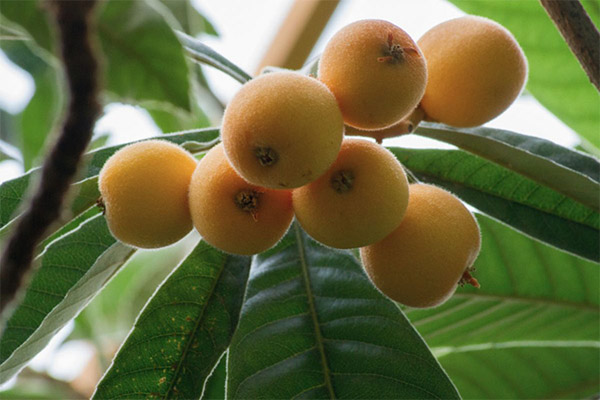
- Medlar leaves have anti-inflammatory and analgesic properties, can alleviate the symptoms of oncology.
- Plant extracts protect the body from cellular aging. In addition, they have a beneficial effect on the body during the course of HIV.
- Foliage can also be used as a means to maintain brain function, protect against oxidative stress, improve cognitive abilities and memory.
- The leaves have antidiabetic properties, and are also widely used in the manufacture of agents that help treat colds.
Application in cosmetology
Medlar is rich in vitamin A, antioxidants and astringents, which have a beneficial effect on the skin. Means based on it nourish and moisturize the skin, and also help delay its aging. In addition, medications based on medlar leaves can relieve redness, irritation and other effects of the environment on sensitive skin. The pulp of the fruit can be independently added to any home mask, mixing with kefir, egg, cosmetic clay.
Medlar in cooking
As a rule, the fruits of medlar are used for food, and the leaves and bark are used to make medicinal tinctures and tea. Fruits are usually eaten fresh, often as part of various salads. A variety of goodies can be prepared from the fruits - marmalade, jam, preserves, marshmallows and compotes - or you can use them as a candy filling. Medlar is also used in the process of preparing soft drinks and even wines.
Medlar fruit in medicine
The fruits of an evergreen plant have a number of useful properties that have been known since ancient times. In the field of traditional medicine, there are many recipes based on medlar. For example, broths for the treatment of diseases of the genitourinary system can be made from unripe fruits. Fruit-based decoctions are used in cases of inflammation of the gastrointestinal tract and bloody diarrhea. Alcohol tinctures are made from the pulp, which help with bronchial asthma. Fruits are also useful for diseases of blood vessels and the heart. They can also help remove kidney stones and improve colic conditions.
Harm and contraindications
Medlar is contraindicated in such cases:
- Individual intolerance. If allergic reactions occur, it is necessary to abandon the use of fruits and take antihistamines.
- Stomach problems. Before using medlar, you must consult a doctor.
How to choose and store loquat
When buying medlar, you need to choose slightly “rotten” fruits. The optimal degree of fetal maturity can be determined by touch. In size, average fruits are welcomed, as small ones are usually too acidic, and large ones, as a rule, are not very tasty.
When growing medlar on the site, it is not recommended to immediately remove fruits from the trees immediately after ripening. But you must also consider that they are afraid of frost.
Medlar is stored in the refrigerator for no more than 2 days. It is recommended to lay the fruit in one layer on dry sand or paper. You can pre-bathe the fruit in concentrated saline - this will prevent rot and mold.
How to eat medlar fruit
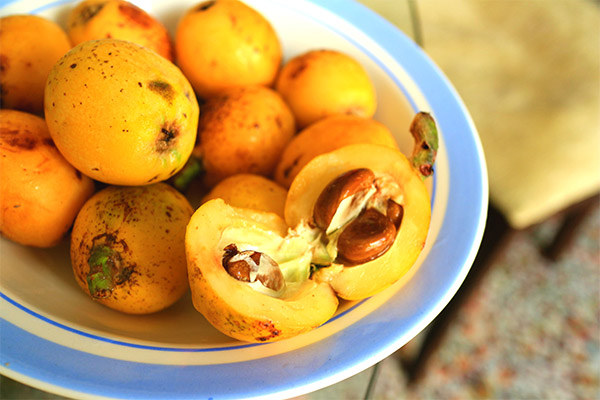
Medlar is best consumed in its natural form, because it contains vitamins necessary for the body, which are lost after processing. The peel from ripe fruits is quite easy to separate, but if you want, you can eat fruit with it. The peeled pulp can be combined with other ingredients in powdered form in a variety of salads. Medlar is sometimes eaten stewed with sugar. The pulp is great for gelatin desserts, sauces, as well as for filling in baked goods.
Can I eat bones
Medlar bones in their natural form are dangerous to health, since they contain toxic hydrocyanic acid. Eating them is not just not recommended, but strictly prohibited.
What can be prepared from medlar: recipes
Jam
Ingredients:
- loquat - 5 kg;
- sugar - 1.5 g;
- water - 1.5 l.
- lemon - 1 pc.
How to cook:
- Cut the peel from the washed fruit and remove the seeds.
- Pour water into the pan, add sugar, lemon juice and put on fire. Stir constantly during cooking. Bring to a boil, the sugar should completely dissolve.
- Put the fruits of medlar in a saucepan. Cook for about 15 minutes over medium heat. Then remove from heat, leave for 7-8 hours.
- Bring to a boil again, boil for 5 minutes and again allow to cool completely.
- Carry out the welding procedure 3 times (this is the total number of brews).
- Pour jam into sterilized jars and roll up.
Compote
Ingredients:
- medlar fruits - 950 g;
- granulated sugar - 560 g;
- citric acid - 1 pinch.
- water - 1 l.
How to cook:
- Cut the fruit into halves and remove the stone.
- Put the pulp into a pan (enameled), add sugar and water. Put on fire.
- After boiling, boil for about 7 minutes.
- Add citric acid, pour the drink into sterile jars and immediately roll them up.
Is it possible to give animals medlar fruit
This fruit is not recommended for dogs. However, in some cases, medlar-based fluids are prescribed for pets, which alleviate the condition for colds and help get rid of cough. In a cat's diet, this product is better not to include.
Interesting facts about the fruit of medlar
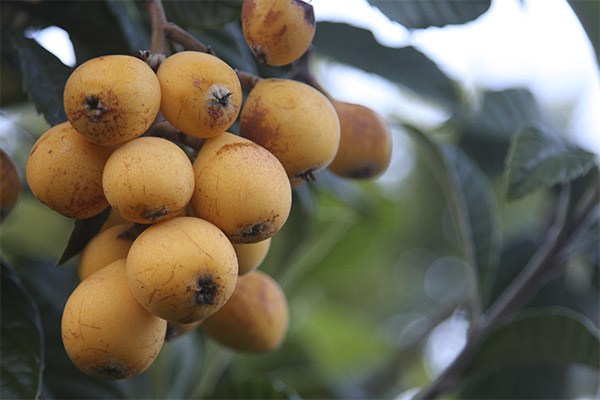
- In the wild, medlar can live up to 50 years.
- Medlar stands out among fruit crops in that the flowering lasts from autumn to winter.
- China is considered the homeland.
- Medlar has been grown in Japan for over 1000 years.
- The fruits are used to make plum wine.
- It is believed that Chinese immigrants delivered the medlar to Hawaii.
- Medlar is often mentioned in ancient Chinese literature (in Li Bai's verses).
- In Japan, medlar leaves are dried to make a drink known as “biwa cha” by cooking using the traditional Japanese method. According to the assurances of some Japanese, biwa tea has a beneficial effect on appearance - it improves skin condition and treats skin inflammations.
«Important: all information on the site is provided exclusively in fact-finding purposes. Before applying any recommendations, consult with a profile specialist. Neither the editors nor the authors are liable for any possible harm caused materials. "

